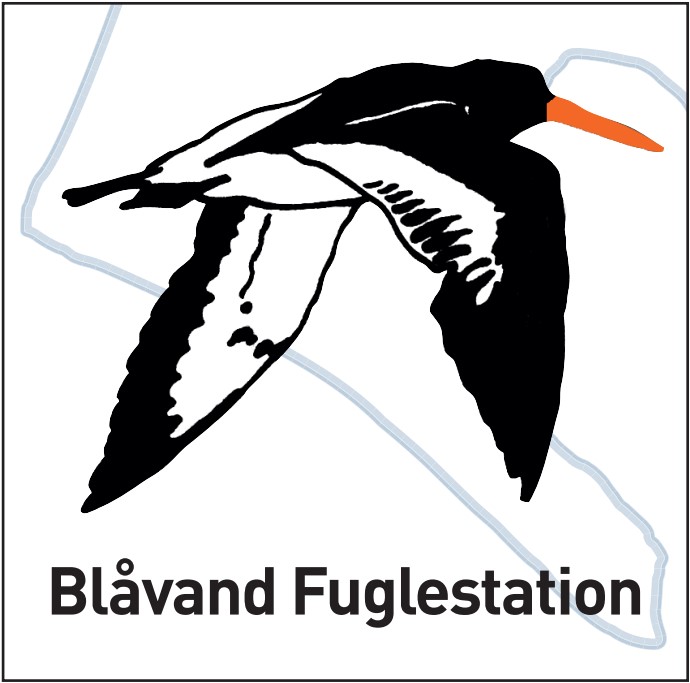Her på Blåvand's blog bringes korte nyheder i dagbogsformat om livet og hændelser på fuglestationen.
Ala i går..
Observations:
På mange måder lignede dagen i dag, en hel del dagen i går, bare lidt mere stille på alle fronter.
Det var desværre endnu en meget diset morgen på hukket.. Det er meget flot og til småfugle i buskene ..kan det være godt, men til træk er det naturligvis virkelig ikke optimalt..
Man kunne dog stadig se noget af havet og de nærmeste Sortænder, som der i dag også kom en del af kunne tælles. 4550 blev det til i alt, hvilket er godt nok..
Og ligesom igår kom der igen i dag også lidt stære, men også her en del færre end i går, her blev det til 4630, så omkring en halvering af i går..
Ellers kan der nævnes en ung og en gammel Ride, 3 Havlitter og en Blå Kærhøg som kom fuldstændig vanvittigt godt tæt forbi obs klitten i morgenens aller første lys.
Ringing:
There was already quite some activity in the gardens, when we opened the nests. Mainly Blackbirds “Solsort”.
Close to one net in the lighthouse garden, I flushed a Woodcock “Skovsneppe”. They have been in the lighthouse garden for some days already. One evening, I tried with sound, but they did not react. Hoping to get one the next time. But today was not the day.
Mainly Blackbirds “Solsort” in the nets. The wind was again very low, 1.0 to 3.1 meters per second during the standard hours. Perfect conditions for ringing, but less birds than yesterday.
This morning felt a bit colder overall. It was about 7 to 9 degrees. Actually, still pretty mild for the time of year. But slowly getting winter. Very slowly…
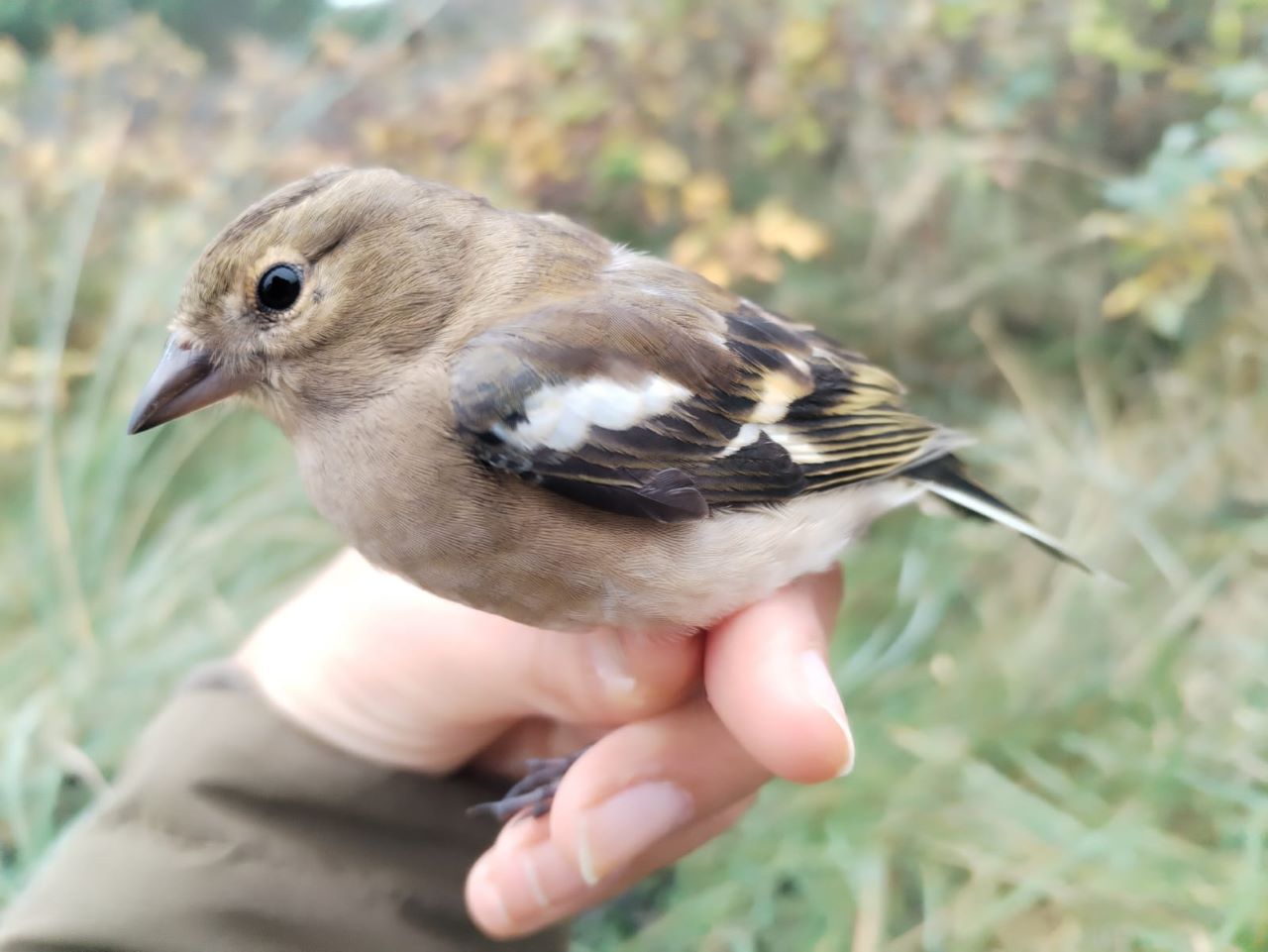
Chaffinch female/ Bogfinke hun
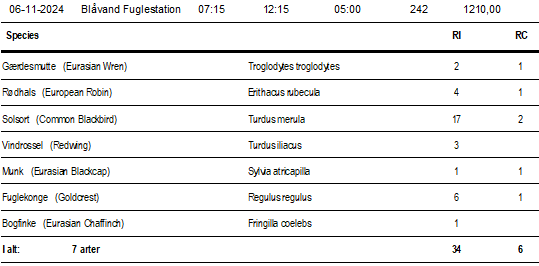
Moths:
Just one moth, but can alraedy promise, tomorrow, it will be more, already had two when I checked this evening. But will leave them for tomorrows blog...
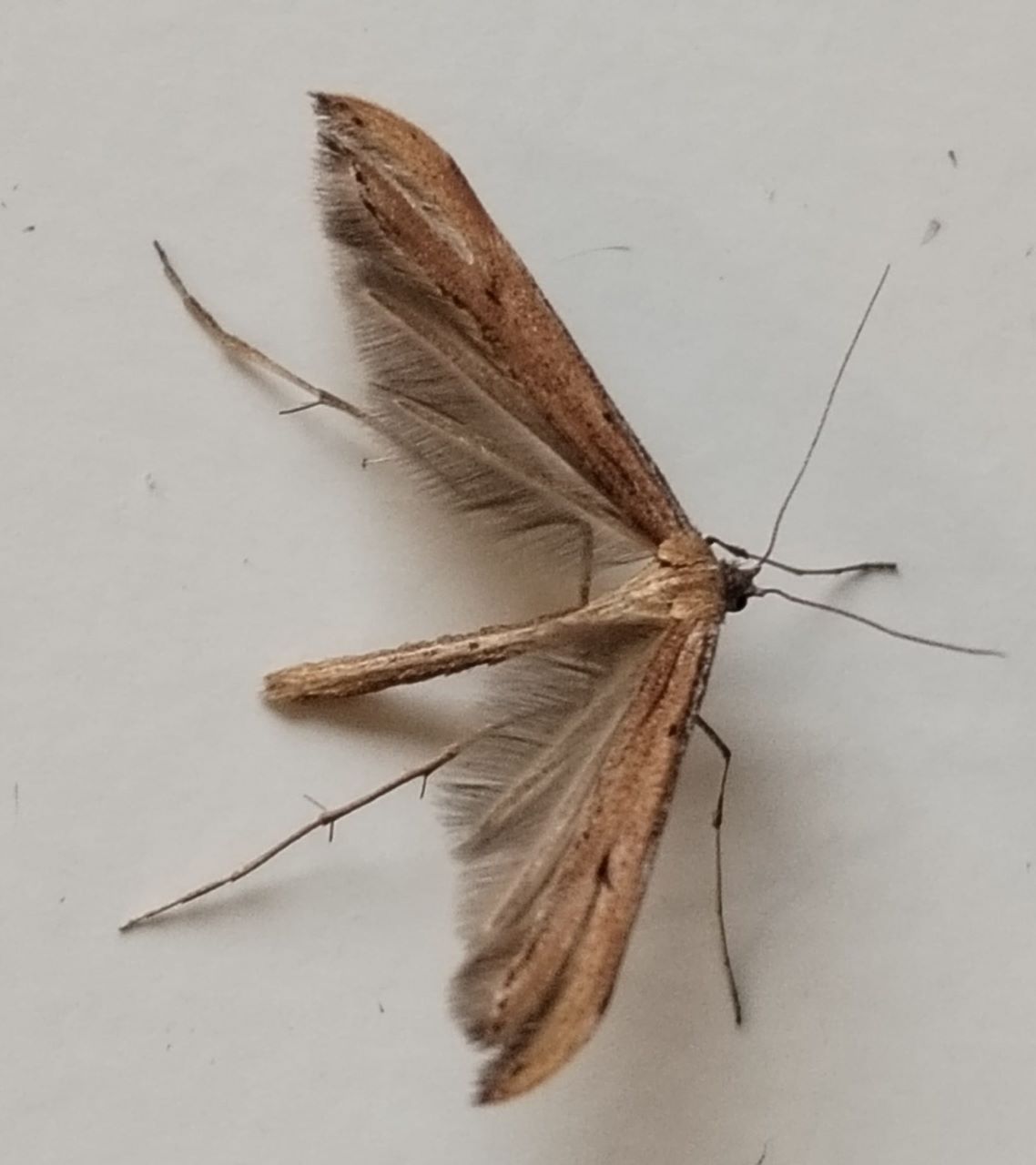
Emmelina monodactyla/ Snerlefjermøl today on the wall.
At the station: Louis, Hanelie, Chung-Chi, David.
Sort i gråt
Observations:
En morgen med ret høje forventninger i dag, med vind skift til SØ, og med viden om hvad denne dato har bragt bla. sidste år.. Det blev delvist indfriet.. eller….ìk..
Det var i hvert fald ikke nogle meget specielle fugle, men der kom da en god sjat fugle i forhold til at vi er i starten af november.. det var så spredt over ca. to arter godt nok ..Sortand og Stær…
Sigten var igen i dag kraftigt begrænset det meste af tiden, hvilket også begrænsede synet til de fjerne Sortænder, og sikkert nogle Stære som har gået længere inde.. Men det kunne et eller andet, at stå der i disen mens der, over havet kom væltende med sorte fugle (Sortænder) og over land kom det “væltende” ud af tågen med sorte fugle (Stære)
Vi endte på 15691 trækkende fugle, hvoraf, 15505 var Stære og Sortænder…
Det var som sagt meget tyndt med andre arter, de mest interessante andre blev, 1 Havlit, 1 Gråstrubet Lappedykker og 1 Husmus som personligt er ny "huk" art!
Ringing:
The first rounds brought a good number of birds. Then it slowed down quite a lot. It was again mainly Blackbirds “Solsort”, but also Goldcrests “Fuglekonge”. November brings better numbers than expected so far. At the moment, conditions are perfect for ringing, with very low wind, also the next days, so let´s hope it stays like that the next days.
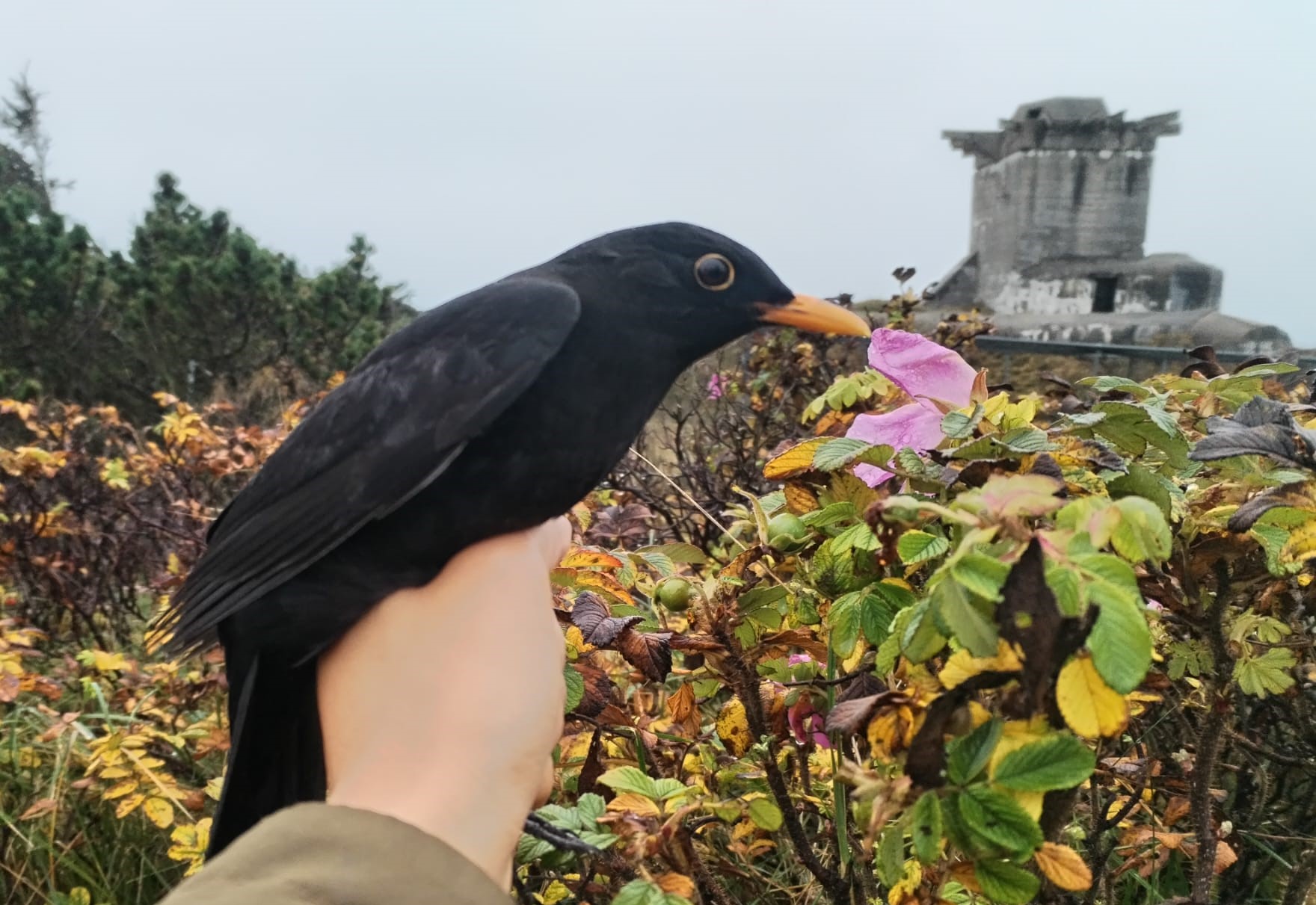
Blackbird male/ Solsort han
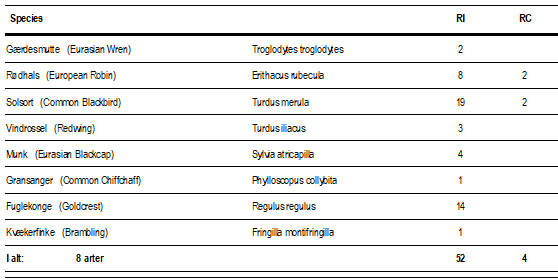
Moths:
A night which was perfect for moth, very low wind and a bit of moisture in the air. But getting late in the year. I had just three moths and a Black-bellied Diving Beetle in my trap, but one of the moths was new for me, the December moth.
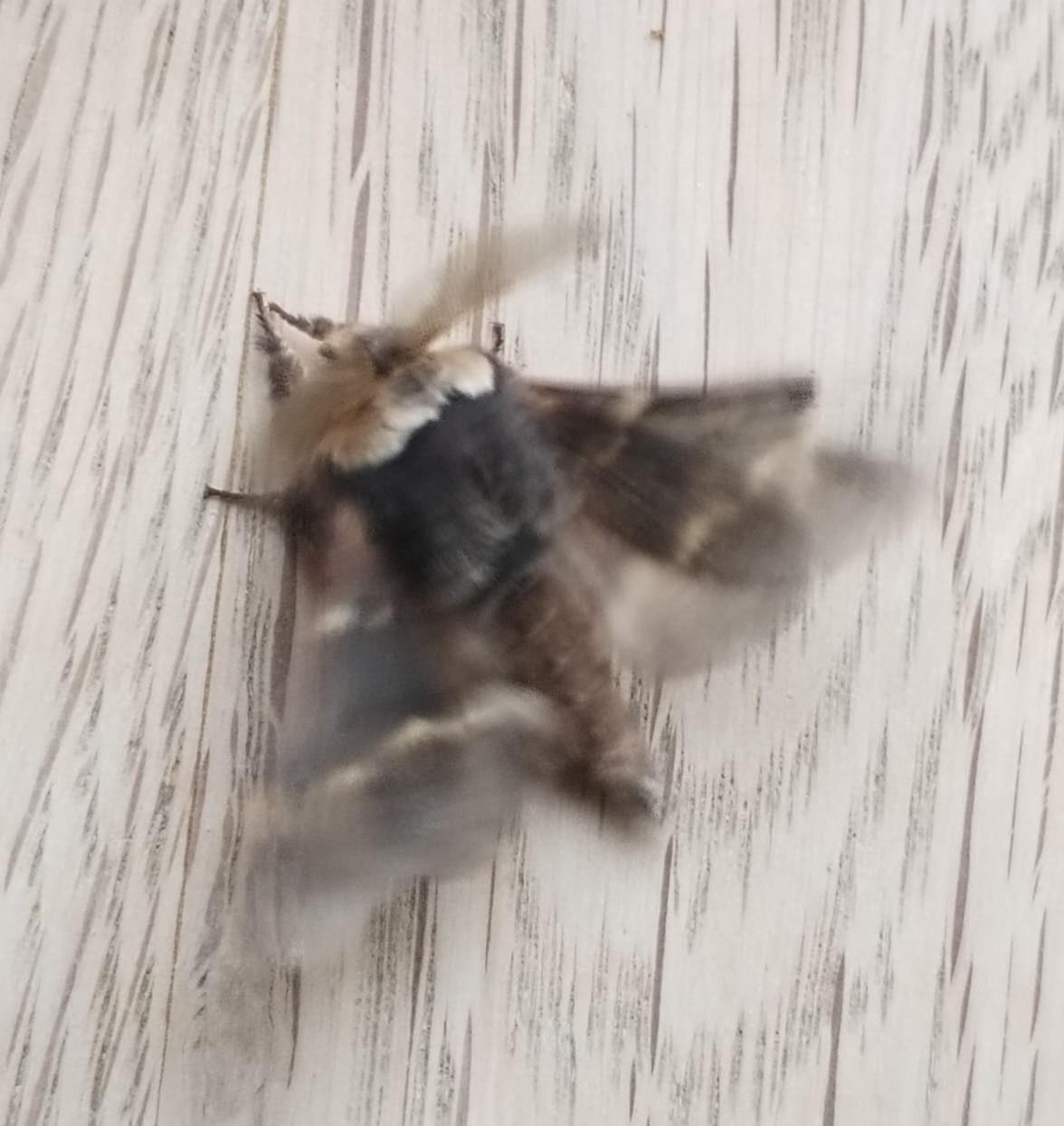
Poecilocampa populi/ Poppelspinder/ December moth - the moth did not want to keep still for a picture...

At the station: Louis, Hanelie, Chung-Chi, David
Lige lovlig nedsat sigt
Observations:
En vejrmæssigt flot dag, men fuglemæssigt ret stille, specielt de mange byger som kom rullende ind over hukket og nedsatte sigten markant, gjorde det lidt mere besværligt at se fuglene…
Der kom dog lidt Stære som nok var højdepunktet/’rne i dag, det var dog mest i starten af morgenen de kom og det gik derefter ret meget ned ad bakke..
Vi kom op på 3445, hvilket er fint.. men der måtte godt lige have været et 0 mere..;)
Udover Stærene var det minimalt med bevægelser..
Der kom på et tidspunkt 3 Store Skallesluger hanner sammen, hvilket ikke er helt hverdagskost på hukket, men så er det heller ikke vildere end det, det er blot “dejligt”..
Ringing:
The opening was postponed a little today, because of rain. Chung-Chi opened the station garden and I did the lighthouse garden. She already had some Blackbirds “Solsort” just after opening, while it stayed rather quiet in the lighthouse garden. Half of our birds caught today were Blackbirds “Solsort”. We had some interesting recaptures, I took the first-year male Sparrowhawk “Spurvehøg”, that I had ringed a week ago out of the net again, it had gained 0,3 gramms – pretty stable in its weight. It is the claws, not the bill, that can hurt in Sparrowhawks “Spurvehøg” and knowing that, the legs are the first thing I need to control. All the last birds I had did not get me, also not this, but it tried to use its bill instead, as I held its legs tight. So I got a little nip of the Sparrowhawk “Spurvehøg” today, but no, this did not hurt and did not help it. There was another interesting recapture, a Wren “Gærdesmutte”, that Anton had ringed last year. But all in all, a rather quiet ringing day…
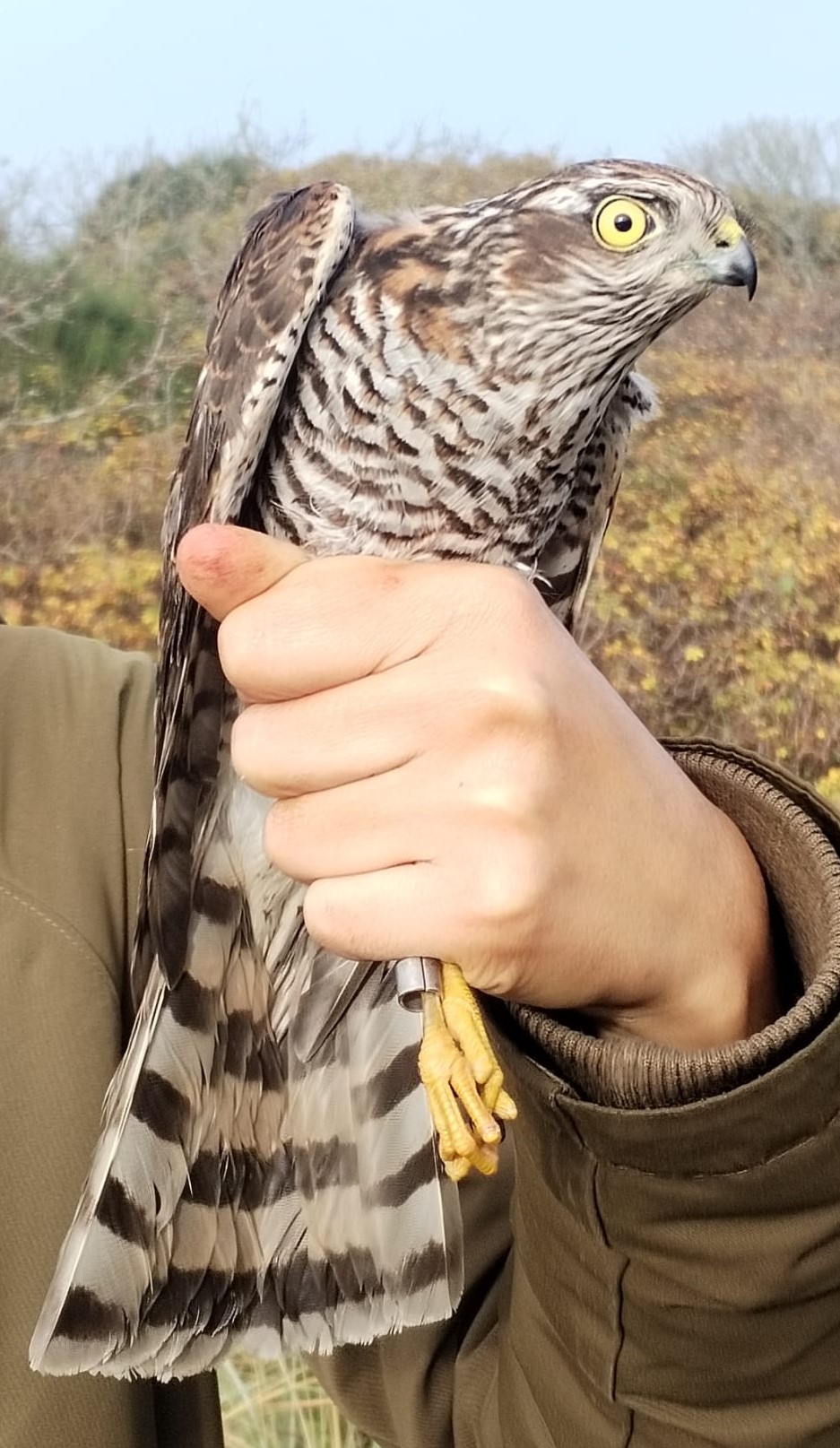
Sparrowhawk male /Spurvehøg han

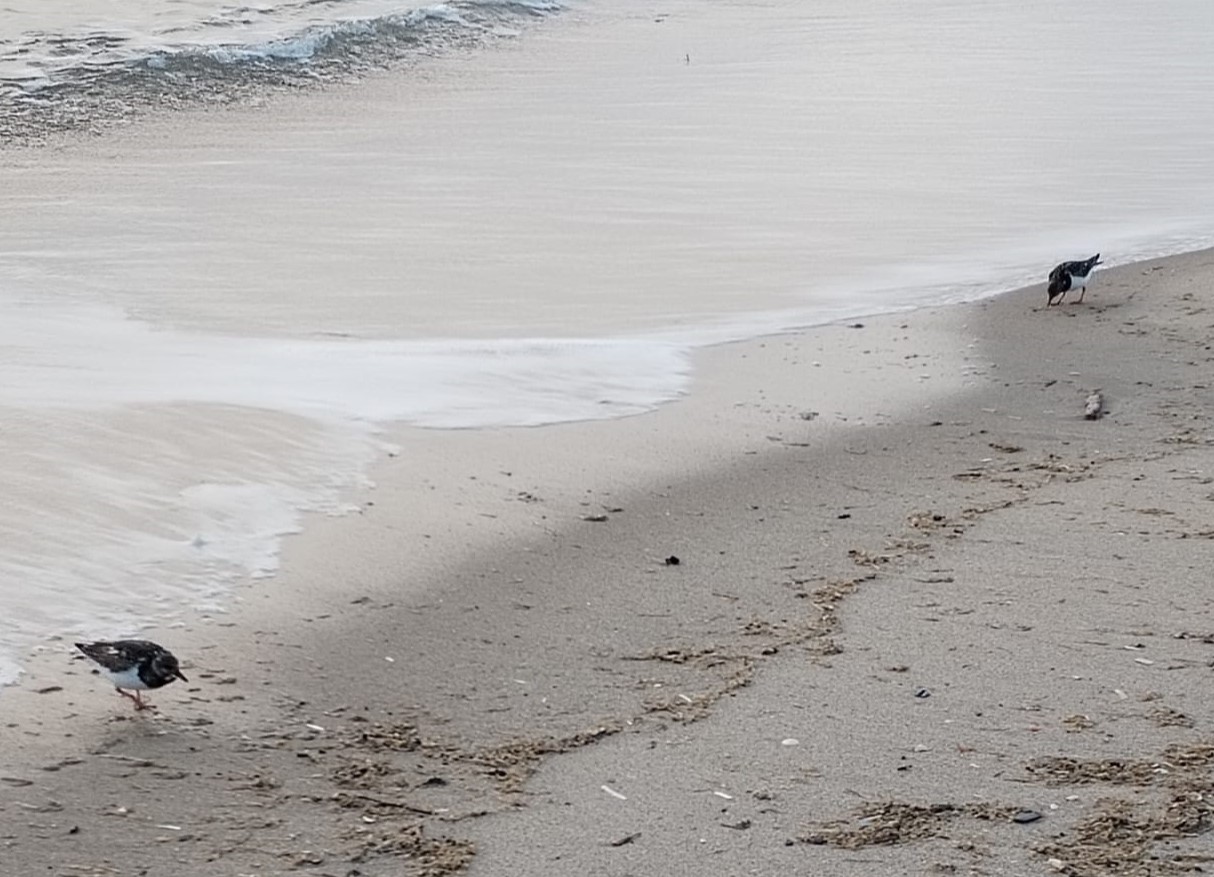
Turnstones "Stenvender" at the beach.
At the station: Louis, Hanelie, Chung-Chi, David.
A late Arctic Tern and a flock of Redpolls saved the morning
Ringing:
Just 113 net-meters were open today, it was a bit too windy for the rest. We had some very slow first rounds, in the lighthouse garden we just caught very few Blackbirds “Solsort” and were especially amazed of a pretty first year female with a very reddish-brown breast. Also in the station garden it was quiet, until Menno got a flock of mainly Lesser Redpolls “Lille Gråsisken” with some Siskins “Grønsisken” in between. It was just before his FlexTaxi picked him up to the train station. We ringed the birds together, then Menno left back to the Netherlands, but he already promised, he will be back at the station sometime the next years. Chung-Chi and I finished the ringing day, which continued to be slow, after this little Redpoll/Siskin intermezzo. Tomorrow, we will have less wind, so we are hoping for a good ringing day.
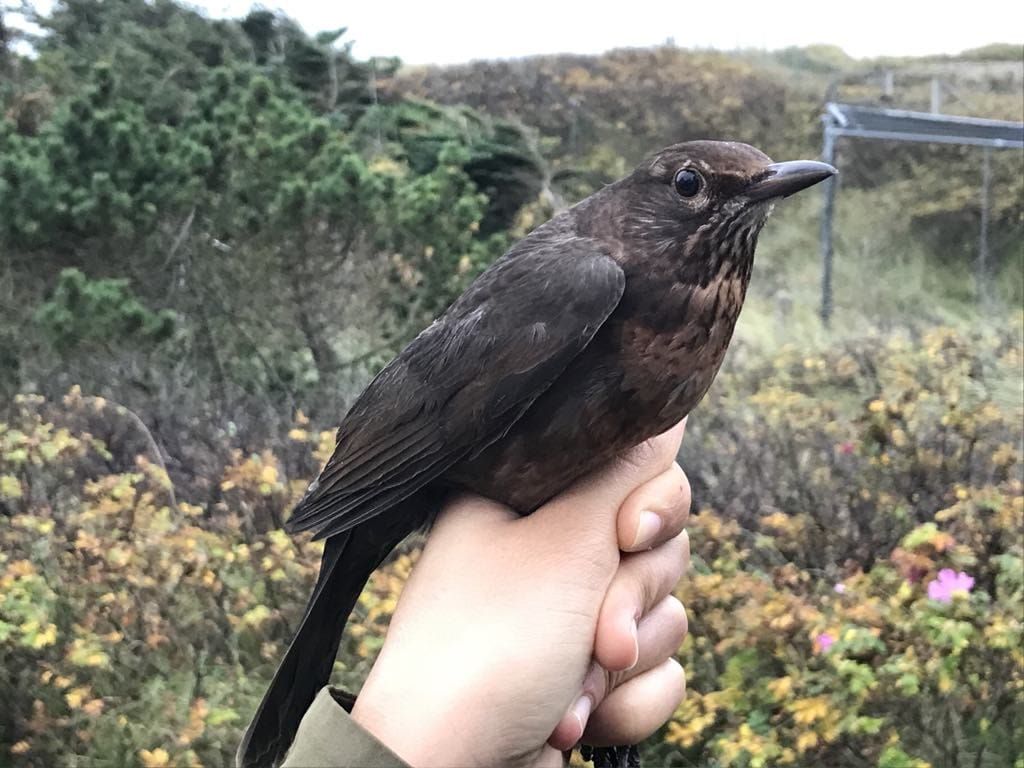
Blackbird/Solsort

Observations:
Endnu en af de der dage med en middelmådig vind fra vest, som er for svag til havfugle, men lidt for kraftig til noget andet..
Specielt i den første halve time kom en del Sortænder, lige over 2000, og i alt 2665.
Herefter gik det ned ad bakke, og havet var meget tomt, highlights var en Gråstrubet Lappedykker og en sen Havterne..
Ellers kom der lidt små flokke af Stære med en total på 1215..
Vi blev også forkælet med lidt regnbyger undervejs, som bare virkelig sætter prikken over i'et på en stille dag som i dag...
At the station: Louis, Hanelie, Chung-Chi, Menno, David
November stemning
Seriøs november stemning på hukket fra morgenstunden af, med blot 5,5° og en kold vind blæste fra nord, og drejede senere ned i sø og resulterede i rigtig fint vejr.
Før standardtiden og den første halve time af den, var der godt gang i lidt af hvert, mange småfugle fløj forvirret rundt, og der var godt med småfugle i krattene, bla. en Hvidbrynet Løvsanger som sad og kaldte neden for obs posten.
Himlen var specielt fyldt af Gråsiskner tidligt om morgenen, der var en flok som voksede sig større og større, som der kom nye små flokke til, og sidste gang jeg så dem var flokken oppe på 205.
Ellers kom der lidt lærker, flest Sanglærker, men også både et par enkelte Hedelærker og Bjerglærker som er blevet presset ned af kulden i Norge..
Inde over land kom en del gæs, de fleste gik desværre rigtig langt inde pga. den svage vind, så det var ikke alle der kunne bestemmes, men der kom også en del flokke tættere på med både, Kortnæbbede gæs, Bramgæs, nogle enkelte Blisgæs, og suverænt flest Grågæs.
Ellers kom der nogle Allike og Råger inde over land også, 200 stks. af hver.
Lige som jeg har forladt obs posten for at gå tilbage mod stationen, og virkelig dumt nok også pakket min optager væk, hører jeg 4 kald fra en meget meget mulig Tajgapiber men jeg når ikke at få hevet optageren frem og startet før den er væk og tavs..
Oven på nederlaget begiver jeg mig alligevel ud igen, en tur i mosen da der stadig er godt med liv i buskene, jeg fandt bla. en meget sen Gærdesanger i den nordlige del af mosen.
På en eftermiddagstur i mosen igen, lå der en Grønbenet Rørhøne, som måske ikke lyder af noget så vildt, men det er en ret stor lokal sjældenhed! Der er ifølge DOFbasen et fund fra 2022, ét fund fra 2020, og herefter er det sidste fund fra 2013.
Ringing:
It was the first morning this autumn, that it was a bit cold, when we went out in the morning, at sunrise it was 5.5 degrees. In the mornings before, we always had between 11 and 12 degrees. It is a unusually mild autumn this year. Before we could even start our first round, Louis had found a new Yellow-browed Warbler “Hvidbrun Løvsanger” at the observation spot and more passerines around than the days before. We found out about that too in the first round, it was many birds in both gardens, a lot of Blackbirds “Solsort”, we ringed 28 today. Also some Lesser Redpolls “Lille Gråsisken” together with some Siskins “Grønsisken”in a little flock on our third round in the lighthouse garden were nice. When we switched gardens, Menno had a rather unpleasant round with many Bluetits “Blåmejse” in a net. Later, there was a Great Spotted Woodpecker “Stor Flagspette” in the station garden and also a recapture of a Crested Tit “Topmejse”, which was a lifer for Chung-Chi, congrads!
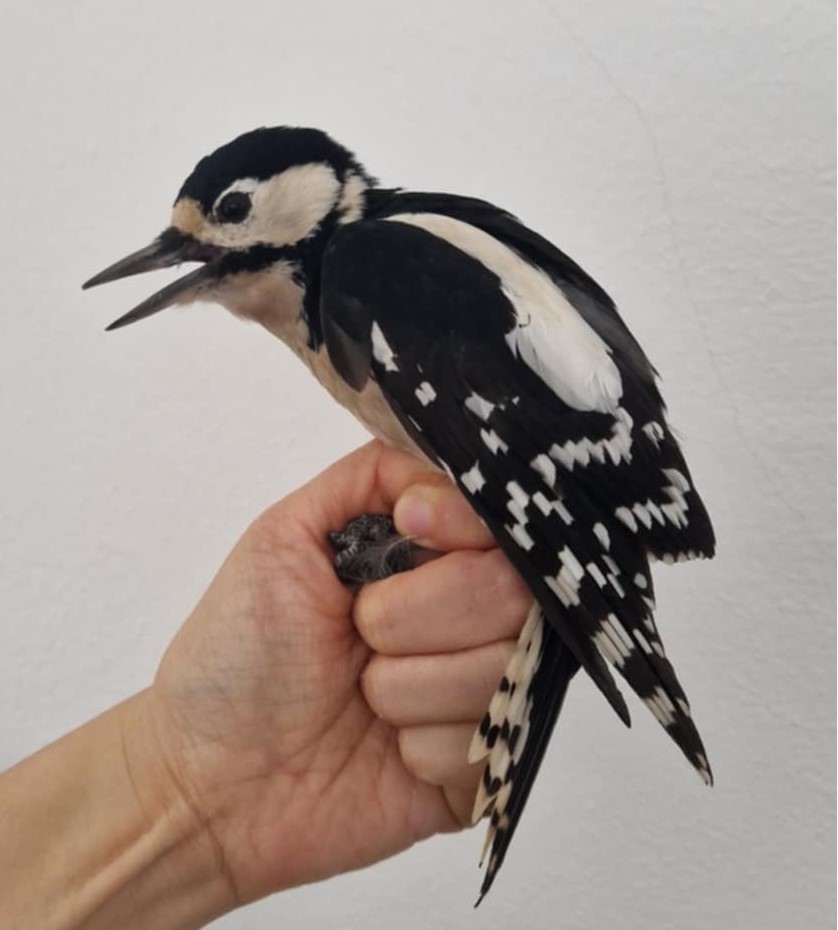
Great Spotted Woodpecker "Stor Flagspætte"

Crested Tit "Topmejse"
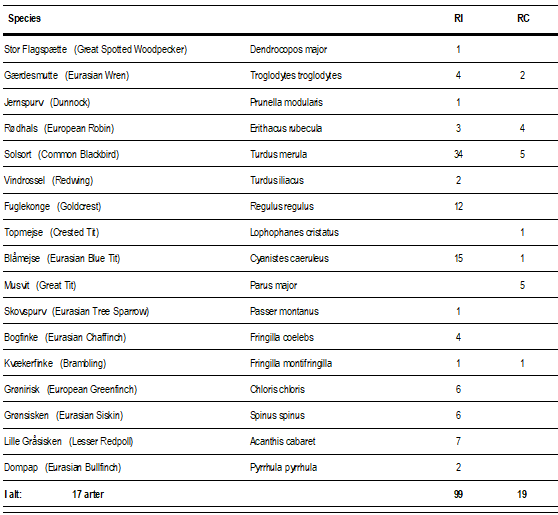
At the station: Louis, Hanelie, Chung-Chi, Menno, David.
En smule blæst fra vest
Observations:
Endnu en dag i blæstens tegn, igen i dag var det dog ikke med den styrke vi havde håbet på, så det var endnu en lidt semi fesen morgen med 10-11 m/s fra vest.
Trods det fik vi dog endelig en rigtig havfugl i bogen efter lang tids fravær, blot et kvarter efter obs start kom en Sodfarvet Skråpe flyvende ualmindeligt langsomt på mellemdistancen, og kunne betragtes i flere minutter, vældig fedt! Men så skal jeg også love for at det gik ned ad bakke derfra.. Herefter var det blot Suler der holdte liv i os, der kom så over 100 godt nok, men jaa.. det er set bedre…
Igen forsøgte jeg og Menno os med en eftermiddags obs på hukket ..som i dag gav endnu mindre end i går, der var fuldstændig dødt trækmæssigt… så det var som Menno sagde, bogstavelig talt “seawatch”..
Ringing:
No ringing because of strong wind.
At the station: Louis, Hanelie, Menno, Chung-Chi.
Yet, the wind did not bring exciting birds...
The ringing:
In the morning, some nets could be opened, before the wind picked up in the afternoon. It was not many birds though that we caught, many of them were Thrushes.
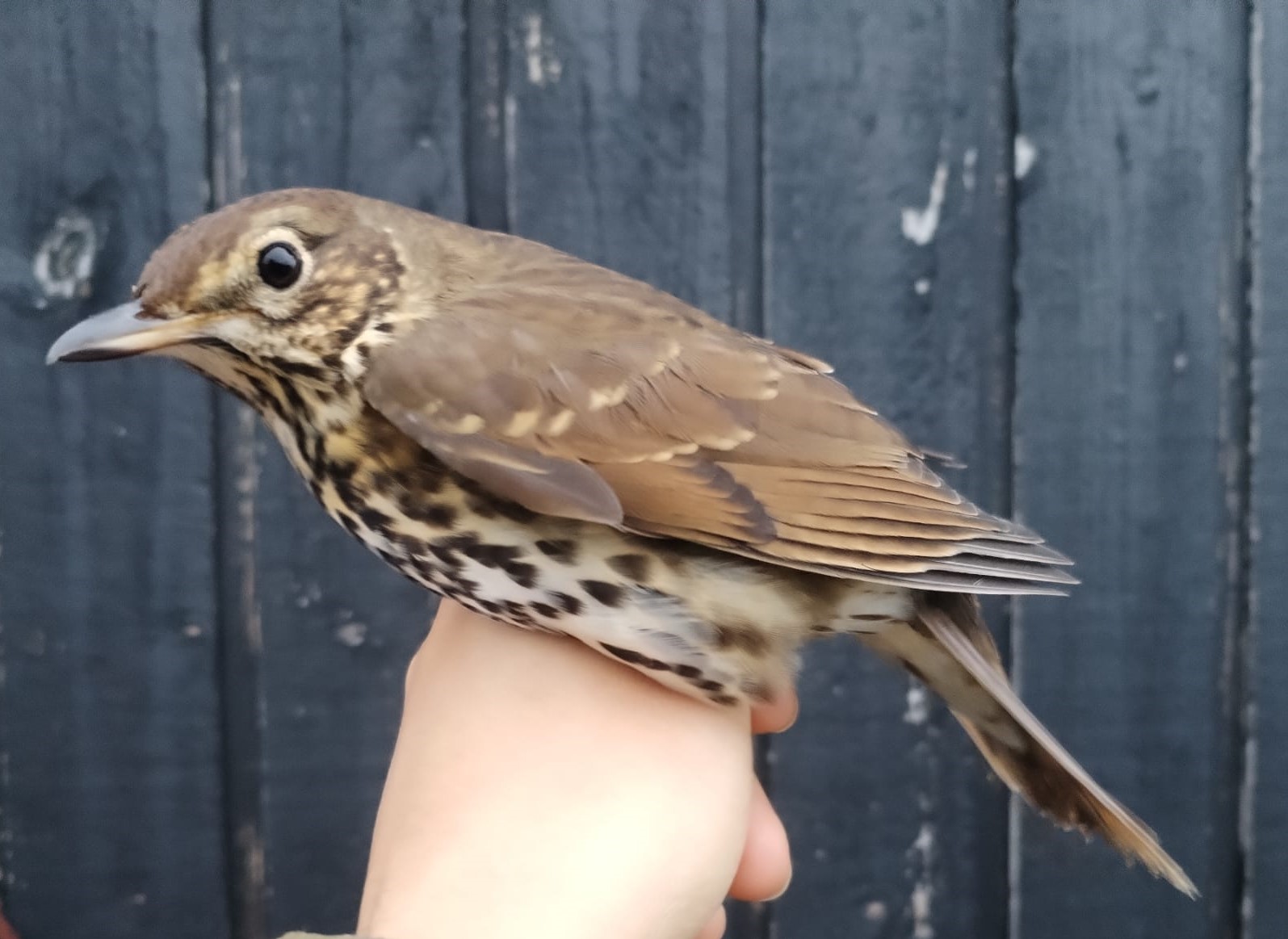
Song Thrush "Sangdrossel"
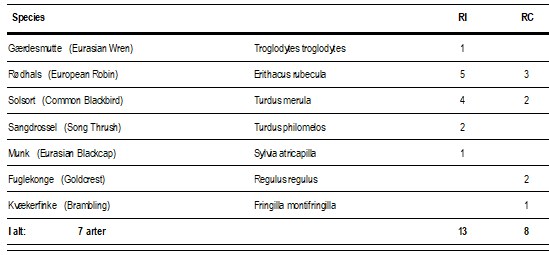
Observations:
En desværre lidt for svag vind blæste fra vest til morgen, blot 9-10 m/s, alligevel håbede vi dog på at det kunne smide nogle "blæse fugle" ind til kysten, måske en Søkonge eller Sod. Skråpe, sådan skulle det dog ikke gå..
I stedet skete der næsten ingenting, der var ikke gang i nogle arter overhovedet..
Der kom en Havlit tæt på, en Kaspisk måge, en grøn ballon som skyllede ind på stranden, og dagens højdepunkt ..en Mosehornugle. Uglen fløj meget mærkeligt nok rundt langt ude over havet først direkte vest, drejede så mod nord laaangt ude og fløj til sidst ind af, længere oppe af kysten.
Ved eftermiddagstid begik, jeg og lidt senere også Menno os ud til hukket i håb om et eftermiddags ryk af noget …der var ikke rigtig hvad man oplevede, ihvertfald ikke det vi drømte om.. der kom lidt Stormmåger, og små 50 Suler godt nok..
..vi håber at vejrguderne skruer op for vinden over natten, og at vi kommer stærkt efter de havfugle i morgen…
At the station: Louis, Hanelie, Chung-Chi, Menno.
Kald nordvestenvind
Observations;
En vind til den lidt kraftige side blæste direkte fra NV til morgen, det var dog ikke kraftigt nok til at være rigtig spændende, og er så bare en lidt irriterende vind retning hvor det er svært at finde godt læ, da man ofte gerne vil kigge i en nord vestlig retning når man kigger over havet i teleskopet…
Det blev godt nok heller ikke særlig interessant derude, personligt havde jeg håbet at det var blevet tid til nogle Dværgmåger, og at de ville blive skubbet lidt ind til kysten pga. vinden idag ..dem fik vi så en af… I stedet kom der lidt Hættemåger i strandkanten ..som også kan noget, men jeg havde nok foretrukket Dværgmåger hvis man kunne vælge..
Småfuglene var tæt på ikke eksisterende, men der kom en god flok på 15 Bjerglærker over havet, og en Hedelærke over hovederne på os.
Dagens highlights blev nok suverænt en Mosehornugle som kom trækkende mod syd over havet på en bestemt overkommelig afstand.
The ringing:
Northwesterly wind with a strength of 7,2 to 8,2 meters per second forced us to keep some nets, particularly in the lighthouse garden, which is the more exposed ringing garden, closed. We closed the lighthouse garden at 12:30, the station garden stayed open for longer, but that gave not many more birds. My highlight of the day was a Lesser Redpoll “ Lille Gråsisken", did not have one in hand this autumn so far.
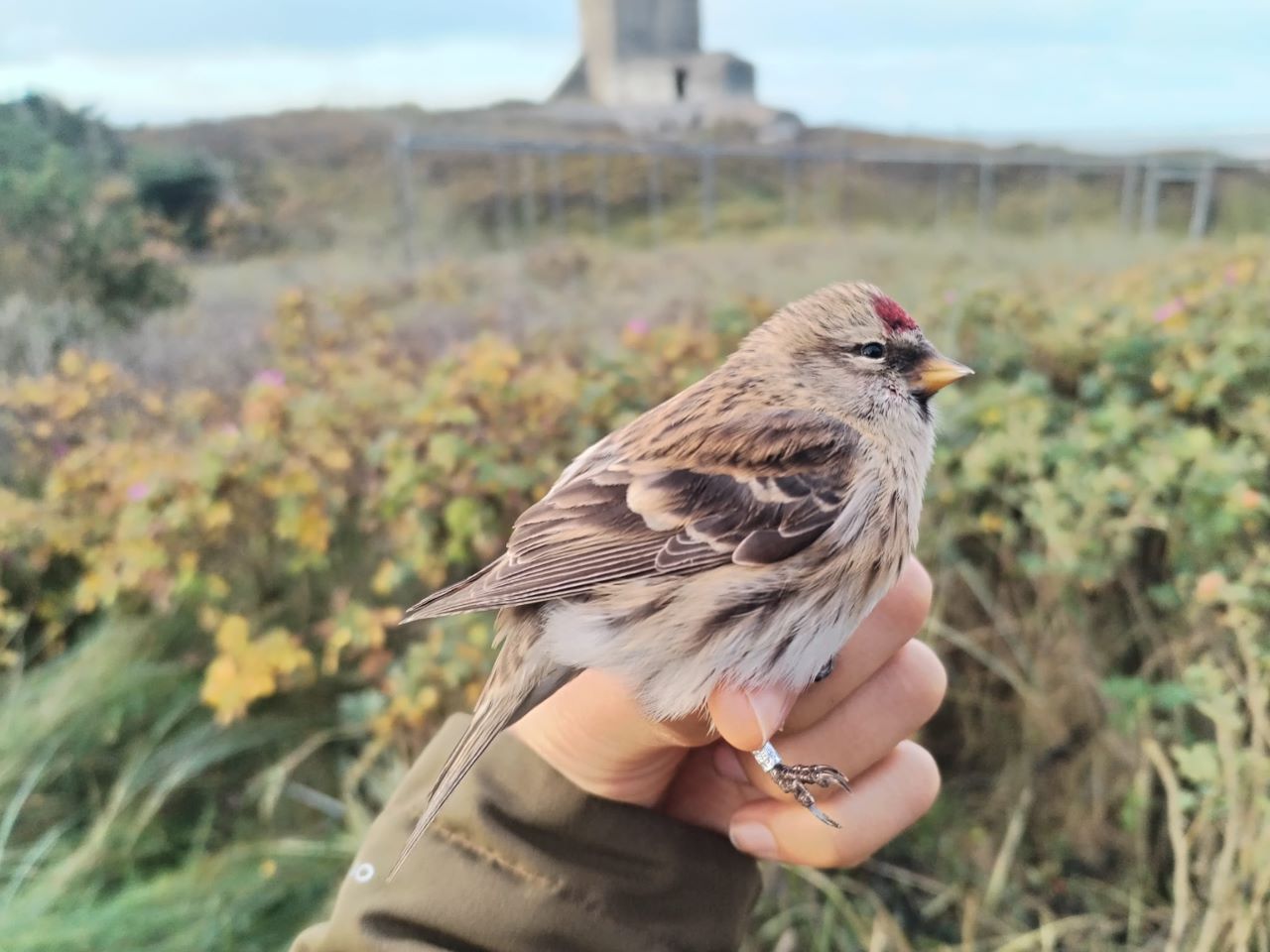
Lesser Redpoll “ Lille Gråsisken”

The moths:
There were some moths in/ around the traps, actually I always find more when I check in the evenings. I had it before but I will nevertheless show the Erannis defolaria “Stor frostmåler”.
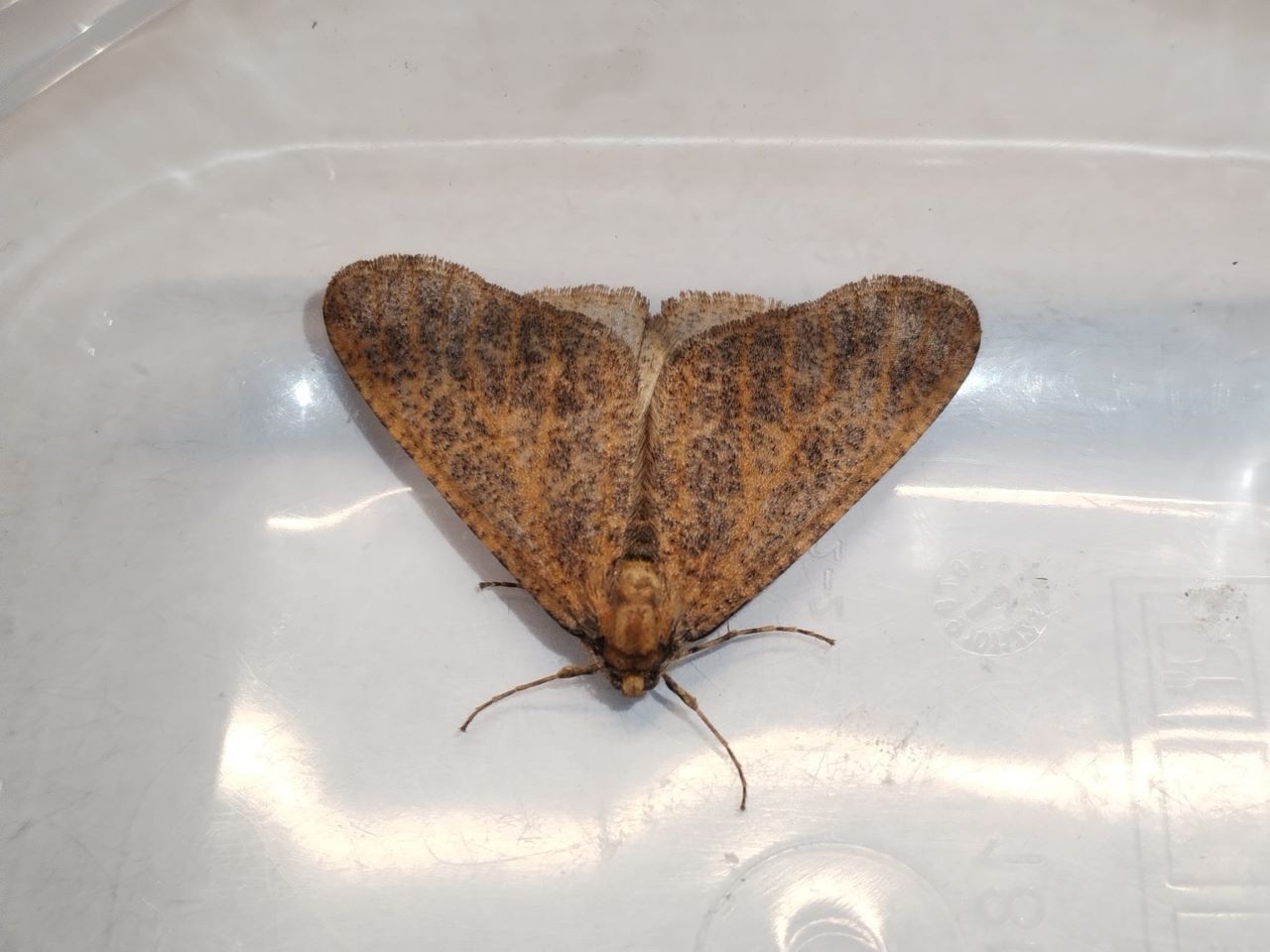
Erannis defolaria “Stor frostmåler”

In the evening, we all had dinner together in town, thanks a lot to Henrik for inviting us!
At the station: Louis, Hanelie, Chung-Chi, Henrik, Lærke, Menno.
En diset dag på hukket
Observations:
I dag var der for en gang skyld ikke regn på radaren, men i dag var det tågen der truede. Først stod den til at ramme kort efter obs start, men sigtbarheden var faktisk forbløffende god.
Der kom godt med Sortænder fra start af, på de første 30 min. havde vi næsten 3500, og på den første time 5265 i alt, desværre kom disen/tågen/regn rullende hurtigt ind fra havet efter en time, og kort tid efter, var der næsten intet hav at se, og dermed ingen ænder at tælle hellere.
Der kom også nogle gode store Stære flokke i den første time, de stilnede desværre også af efter den første time, men vi endte alligevel på lige over 10000!
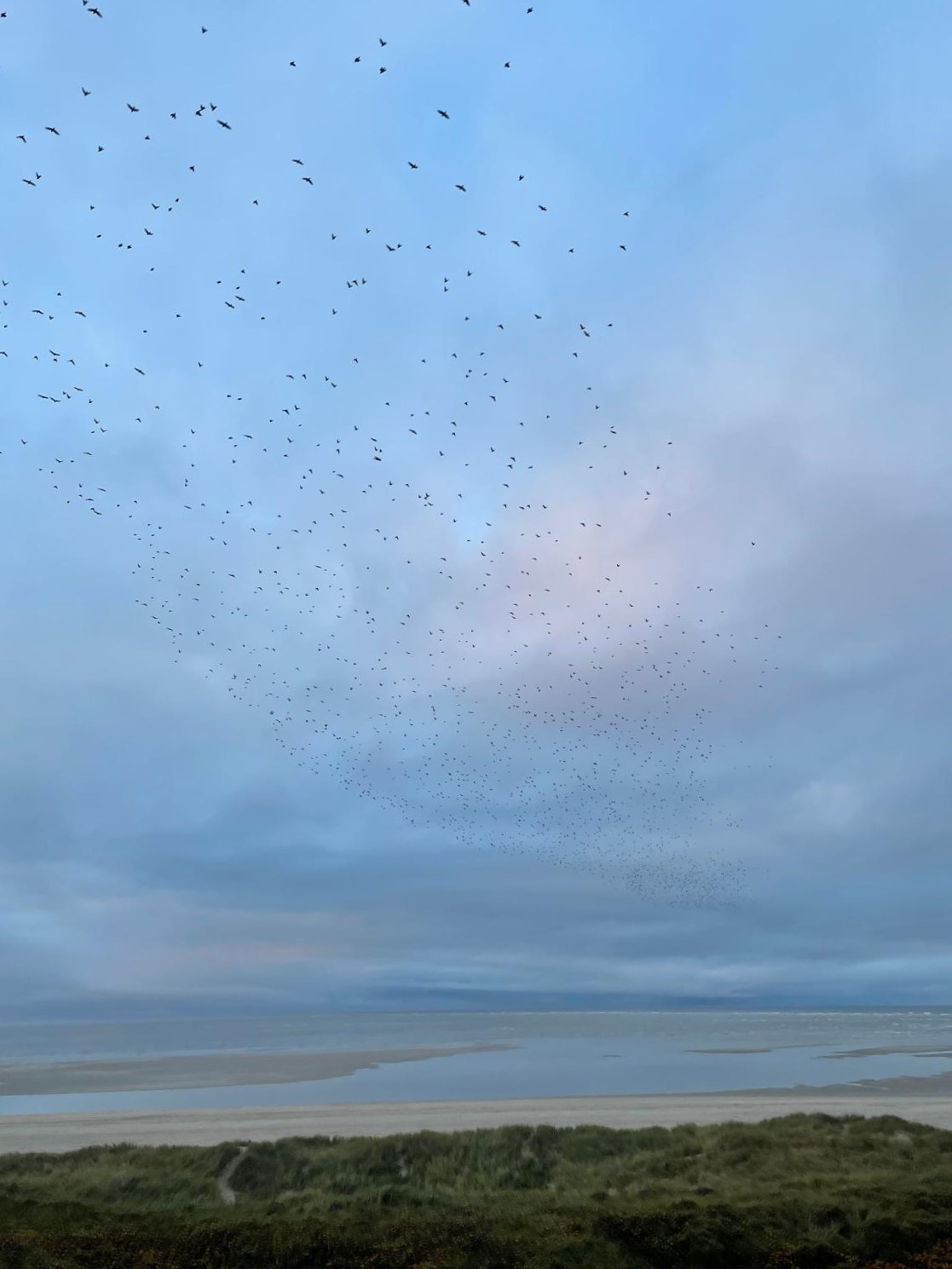 Stære / Foto: Lærke
Stære / Foto: Lærke
Heldigvis gik disen væk efter ikke lang tid, men der kom desværre aldrig rigtigt gang i noget træk mæssigt efterfølgende, ud over nogle Bjerglærker, og en del Spurvehøge med 12 stks.
Efter obsen lå der mange Sortænder meget tæt på kysten ved syd hukket, så vi forsøgte os med at tjekke dem igennem for en Amerikansk. eller noget andet sjovt, men uden held, til gengæld fik vi en Sortstrubet lom som lå ret tæt på kysten:/ :)
The ringing:
Luckily, the weather conditions were way better today than yesterday. More netmeter-hours gave more birds.
The morning started with Menno running out for a female Sparrowhawk “Spurvehøg” in the station garden. We were joined in the first rounds by Robert, a ringer from Germany, who is here on holiday and was interested in ringing and activity of the bird observatory.
18 Goldcrests “Fuglekonge” were caught today, species no. 2 in the nets was the Robin “Rødhals” today, we caught 15. Already for two weeks, we have a lot of Redwings “Vindrossel” migrating during the night. Some also landed in our nets.
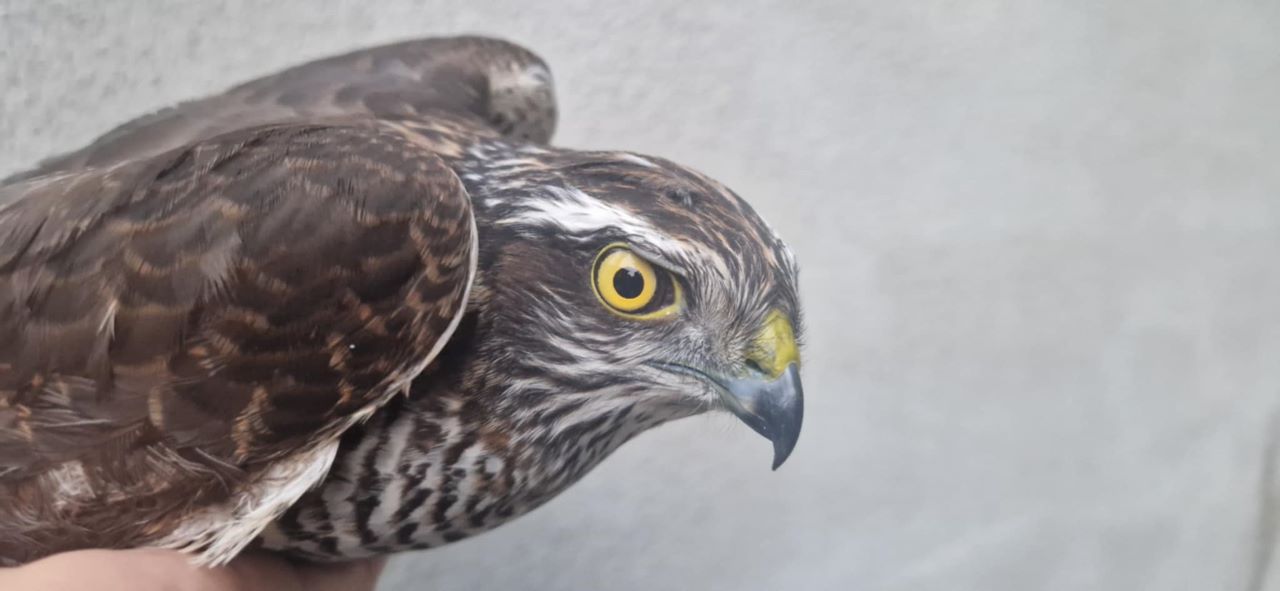
Sparrowhawk female/ Spurvehøg hun
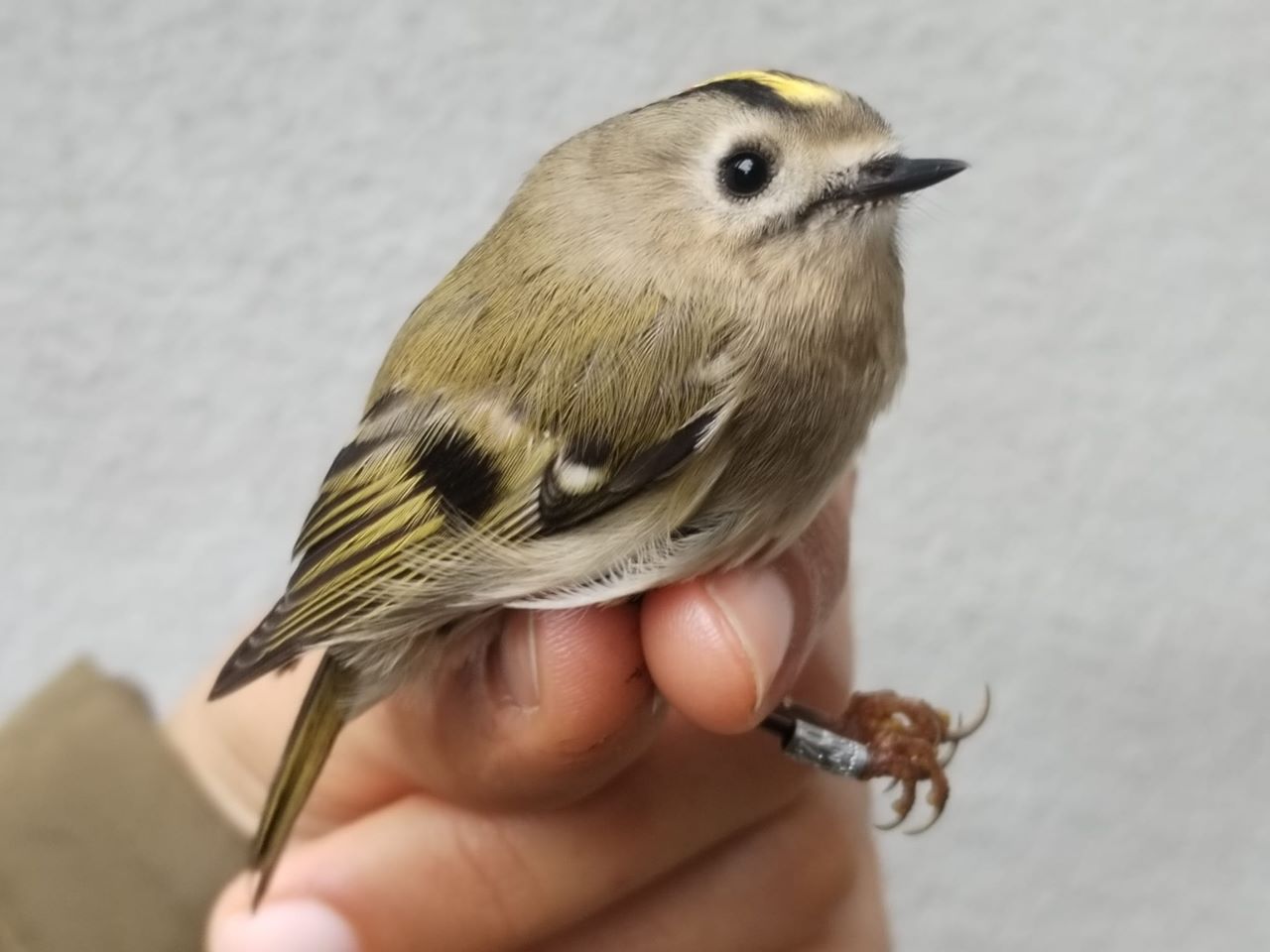
Goldcrest/ Fuglekonge
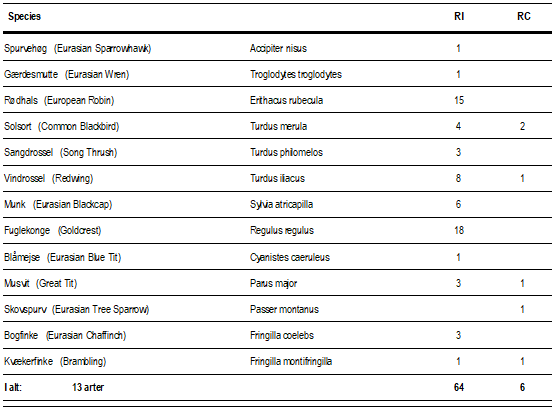
The moths:
Just one moth on the wall today, but a new one for me and quite pretty: Agriopis aurantiaria “Guldgul frostmåler”, a winter species that flies mainly in October and November.
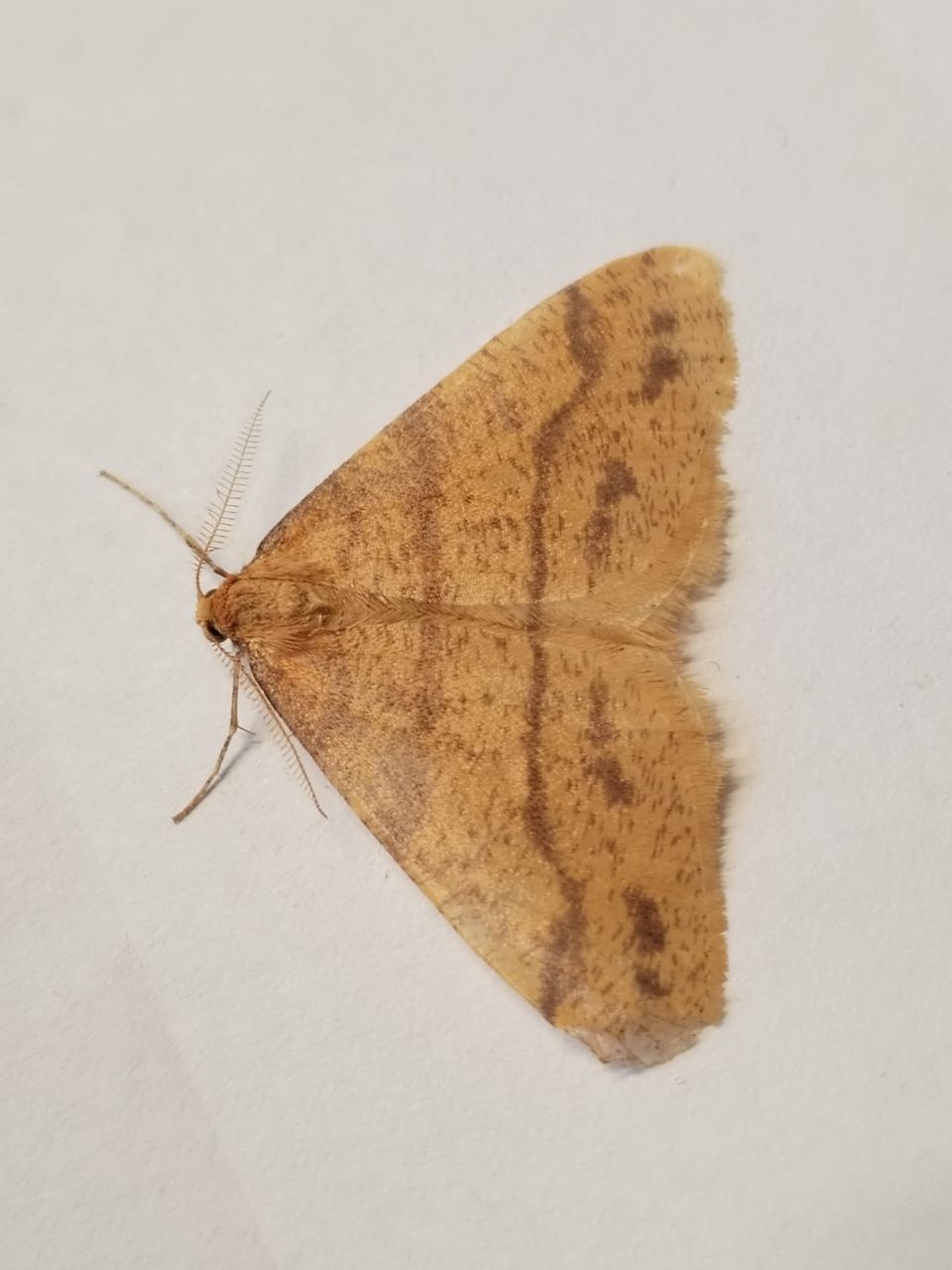
Agriopis aurantiaria “Guldgul frostmåler”
At the station: Louis, Hanelie, Chung-Chi, Lærke, Menno, Henrik.
Vand og drosler...
Observations:
En virkelig stenern morgenobs i dag, som hvis jeg skal være helt ærlig, nok snildt kan snige sig op på en top 3 over de dårligste morgen obser jeg har haft på hukket.
Til at starte med så det ud til at regnen skulle stoppe omkring obs start, men det blev bare ved med at flytte sig, og det endte med at regnen varede ved hele obsen igennem.. Regn er dog ikke ensbetydende med dårligt træk, f.eks har jeg haft mine bedste Sortande dage i styrtende regnvejr, problemet i dag var bare at sigtbarheden meget af tiden ikke var mere end halvanden kilometer ..hvilket gør det ret besværligt at se hvad der foregår over havet ..hvis der altså overhovedet foregår noget..
Og blandet med en lettere forkølelse og kradsende hals, var det nogle lidt lange 3 timer.. Der var dog lyspunkt i den grå morgen, indimellem kom der bla. nogle, for hukket, halv store drossel flokke forbi, hovedsageligt Vindrossler, over 700 blev det faktiskt til, og i blandt kom også 10 Sjaggere.
Derudover kom der også en lille flok på 9 Dværgmåger, som kom så tæt på land at man kunne se dem for regnen, et kæmpe mentalt boost på morgenen.
The ringing:
The waether did not make standard possible but some birds could be caught though.
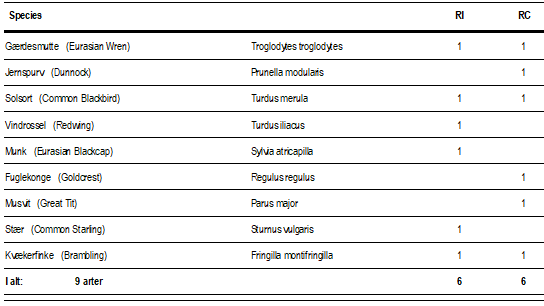
People: Louis, Hanelie, Chung-Chi, Menno, Lærke.
